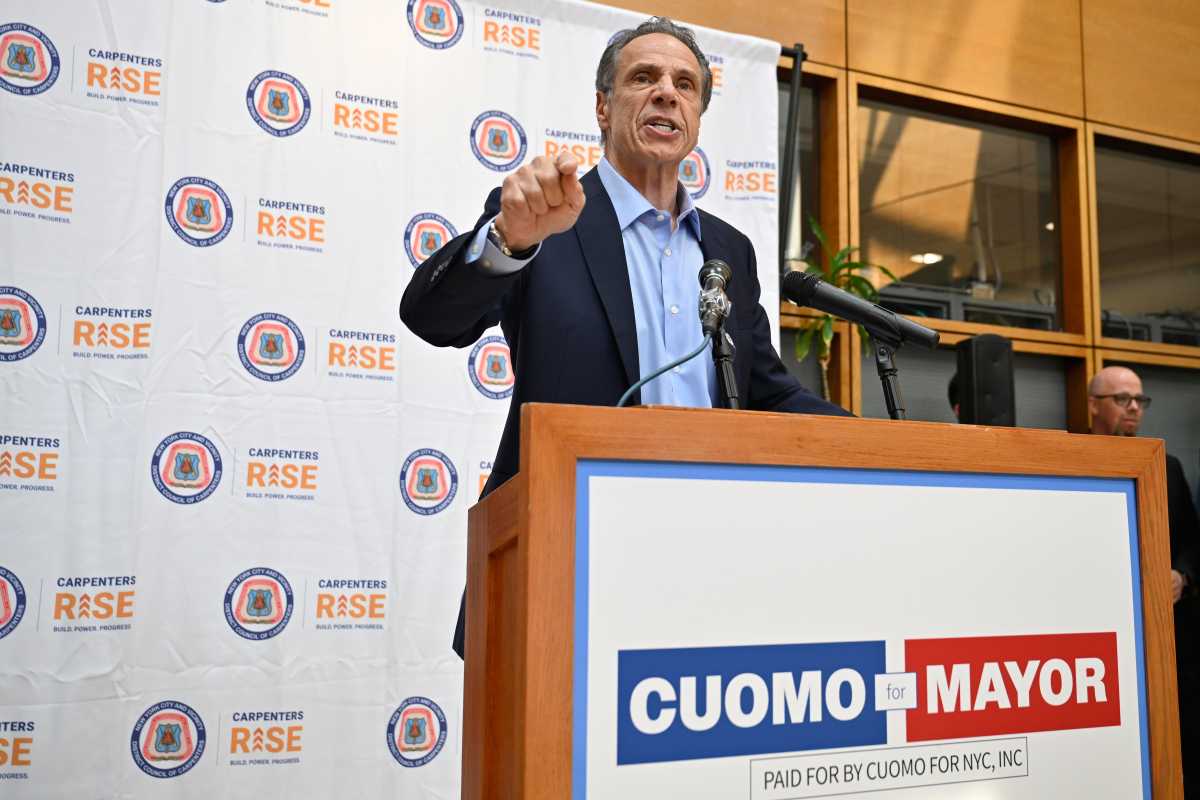This is not your grandfather’s golf cart.
In fact, it’s not even your grandfather’s Oldsmobile (which, as I remember Zeyde’s Cutlass, went 0–60 in a day and a half).
The brand new, all-electric Mini Cooper — of which exactly one exists in Brooklyn — is a sweet ride with all the pop of a race car, the nimble handling of a sports car … and the exhaust of a toy car.
And I got to drive it.
One part of me — the “Star Trek” fan, I suppose — was duly unimpressed. I mean, we were talking about electric cars back in the 1970s. By 2009, we not only expected to be driving them, but we pretty much thought they’d be capable of flight, too.
No such luck.
But the other part of me — the “Inconvenient Truth” guy who is sick of burning dirty old fuels just to get around — couldn’t wait to get behind the wheel of a Mini Cooper that emits no pollution and burns no fossil fuels.
I met my future dream car at the Fulton Ferry landing in DUMBO, where Lex Heslin, CEO of the Columbia Street–based sustainable energy company, Beautiful Earth Group, was waiting for me.
First, I kicked the tires a bit. The only visible differences between this all-electric Mini and the gas-sipping version is the lack of a trunk (it’s completely filled with batteries), a steel box where the engine should be that looks like a casket for a medium-sized dog, a battery charge-ometer where the speedometer typically is, and a plug where the gas usually goes in.
I took the key from Heslin and fired up this baby. In place of a throaty rumble from the ignition, all I got was … nothing. No sound at all. Would this battery-powered toy even get to 20 miles per hour?
Then I hit the gas — and the tires squealed as I went from 0 to 60 on Furman Street in less than six seconds. This thing had more pick-up than the filthiest muscle car from the ’70s — and lots of babe magnitude (one woman actually waved at me on Hicks Street, though I do think she was waving at the car, not me).
There is one weird thing about driving an electric Mini: if you take your foot off the gas, the car begins to slow down rapidly, rather than coasting, which takes some getting used to. But the good news is that the battery is actually recharging itself from your deceleration.
“That’s why it’s the perfect city car,” Heslin said. “The charge actually lasts longer during stop-and-go traffic.”
Of course, there’s one big problem: There aren’t any filling stations for electric cars. Indeed, those smart engineers at Chevrolet (remember them?) missed that one detail when they created the ultimate urban vehicle — the Chevy Volt — and forgot that urbanites don’t park in neat driveways, but anywhere they can find a spot (often further away from the home than the length of a 50-foot extension cord).
Heslin, whose company generates energy from the sun and, soon, from wind, predicted that this is only a short-term problem.
“When cars were first invented, there were no filling stations, either,” he said. “But entrepreneurs filled the vacuum.”
Now, I’ll admit I felt something for Heslin’s electric Mini Cooper that I haven’t felt for a sedan since I fell in love with my brother’s Galaxy 500 that couldn’t go into reverse without being pushed and drove like it was a couch, but I remained skeptical. Sure, this Mini Cooper doesn’t emit pollution, but the power plant that created the electricity does.
“That’s where we come in,” said Heslin. “You don’t need coal to make electricity. My company exists to get people away from coal, gas, oil and nuclear and into sustainable energy sources, primarily solar and wind. We make energy just like the coal or nuclear guys, but we just make it cleanly.”
That, at least, explains why Heslin’s company got one of the first electric Minis in the country. But I was still suspicious. Don’t the laws of supply and demand suggest that if everyone was driving an electric car, the demand would go up, so the price would go up, too?
“But with solar and wind power, most of the costs are upfront, so as you make energy, your cost per kilowatt hour actually keeps going down,” he said.
As such, Heslin is hooked.
“This car is going to change everything,” he said.

























